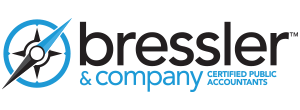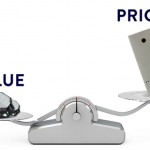2021 Business Plans – How Can Data Guide Your Planning
Business leaders recognize the value of using data to influence decision-making. This has become easier due to cloud-based accounting solutions, better analytical tools, benchmarking and other methods.
But one important question remains… Which data should we access and analyze? There are so many options. Perhaps, we should ask a different question: What drives the success of our business? The answer provides important clues regarding the data that will help us.
Let’s look at some examples of Business Drivers.
Business Driver 1: Lead Generation
Businesses need to generate new opportunities (or leads). This is generally the role of Marketing, Public Relations and Business Development. In addition to the number of leads, we want high-quality leads.
Example: A seller of automotive insurance advertises in social media, on radio and on TV with the goal of generating 1000 leads per month.
Example: A boutique engineering consultancy needs to generate four high-quality leads per year in order to achieve their 5% growth target. They define ‘high-quality’ as ‘decision-makers in large multinational businesses seeking to expand their manufacturing capabilities’.
Business Driver 2: Sales Conversion
Businesses need to convert opportunities into actual revenue. Closing business is critical. This is usually entrusted to the Sales Team who use a variety of tools and sales collateral to get their work done.
Example: A corporate events company hires additional salespeople at the end of the year to take advantage of increased spending on events. They target existing customers and try to create new relationships. Incentives are offered based on success in closing deals.
Example: A firm of attorneys requires each partner to spend one hour per week identifying new opportunities among their clients and then to report on what they have ‘closed’ in the weekly sales meeting. This approach has resulted in a dramatic revenue increase.
Business Driver 3: Revenue per Customer
Customers are the main source of revenue in most businesses. Can we increase the average revenue per customer by increasing price, providing better service or offering new products?
Example: A chain of coffee shops in the CBD increased the price of baked goods by 3%. They watched carefully to see whether this would change the demand for these products. Fortunately, customers continued buying at the same rate and average revenue per customer increased.
Example: An auto repair shop started offering a car wash and detailing service for a small fee with each repair job. Many customers opted for this additional service resulting in additional revenue per customer.
Business Driver 4: Customer Retention
For most businesses, acquiring a brand new customer is more expensive (and difficult) than selling more to an existing customer. One important metric is the lifetime value of a customer (or LTV) which refers to the income generated from a customer over the period you serve that customer.
Example: A large bank markets aggressively to university students by offering easy bank account setup and attractive interest rates. They have calculated that those customers may remain with the bank for decades (i.e. high retention) and will be valuable banking clients as they accumulate assets.
Example: A hospitality business rents leisure boats (jet skis, etc.) to holiday makers. By offering discount coupons at the end of each rental period, the business found that holiday makers would return more frequently instead of seeking out other attractions.
Business Driver 5: Costs of Goods Sold (COGS)
Generating new customers and getting them to buy your product is one thing… but you have to provide those products at a cost that makes sense in your business. COGS will be defined differently for different businesses but may include labor costs, cost of supplies or manufacturing costs.
Example: A manufacturer of ready-made meals sells to convenience stores and direct to consumers. Analysis shows that meals using beef are much less profitable than those using pork and chicken. As a result, they retired most of their beef range to increase profitability in their business.
Example: A manufacturer of packaging products used in the fast-food industry analyzed their suppliers, many of whom they had been buying from for many years. Then they put certain contracts out for competitive bid and were able to save up to 15% per annum on procurement of some goods.
Business Driver 6: Expenses
Successful businesses keep their rental, human resource, administrative, information technology, facilities management and other costs in check. Sometimes bad habits can creep in resulting in waste and reduced profit.
Example: A logistics company manages a large fleet of vehicles. They used to allow drivers to refuel the vehicles at any location, but when they centralized refueling, they got a much better price per liter resulting in significant savings on fuel costs.
Example: A large consulting business with over 300 employees contracted with various suppliers for office printers and printing supplies. They consolidated these contracts with one supplier and realized a 13% decrease in associated expenses.
Which business drivers are important in your business? How does your business perform on the 6 drivers mentioned above? Which one would you most like to optimize? If you could increase performance by, say, 10% in JUST ONE of the above drivers, which one would you choose? You probably won’t be able to optimize all of them so understanding the impact that each one can have can be very helpful as you decide where to prioritize your efforts.
As accountants, we like to see our clients succeed and are eager to help you focus on the right areas. Give us a call if you’d like some help working on these items — 559.924.1225!





